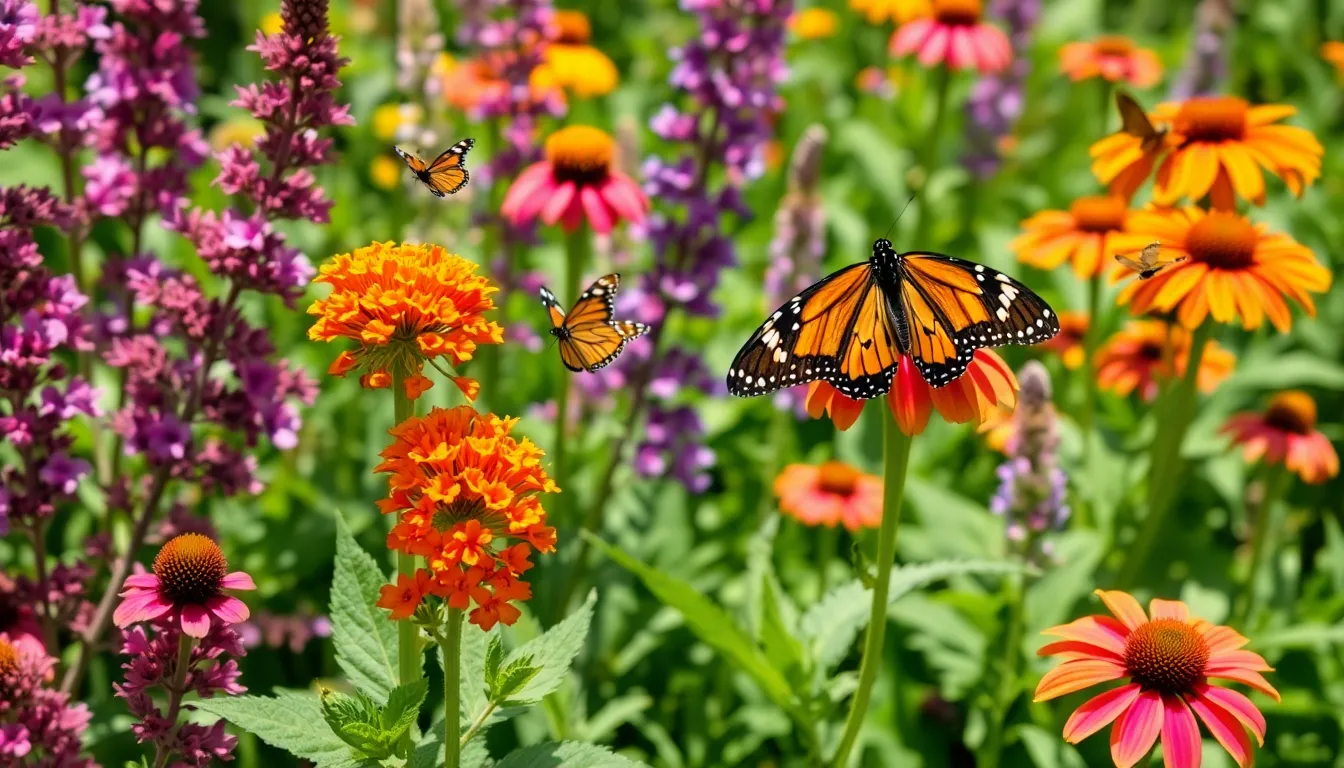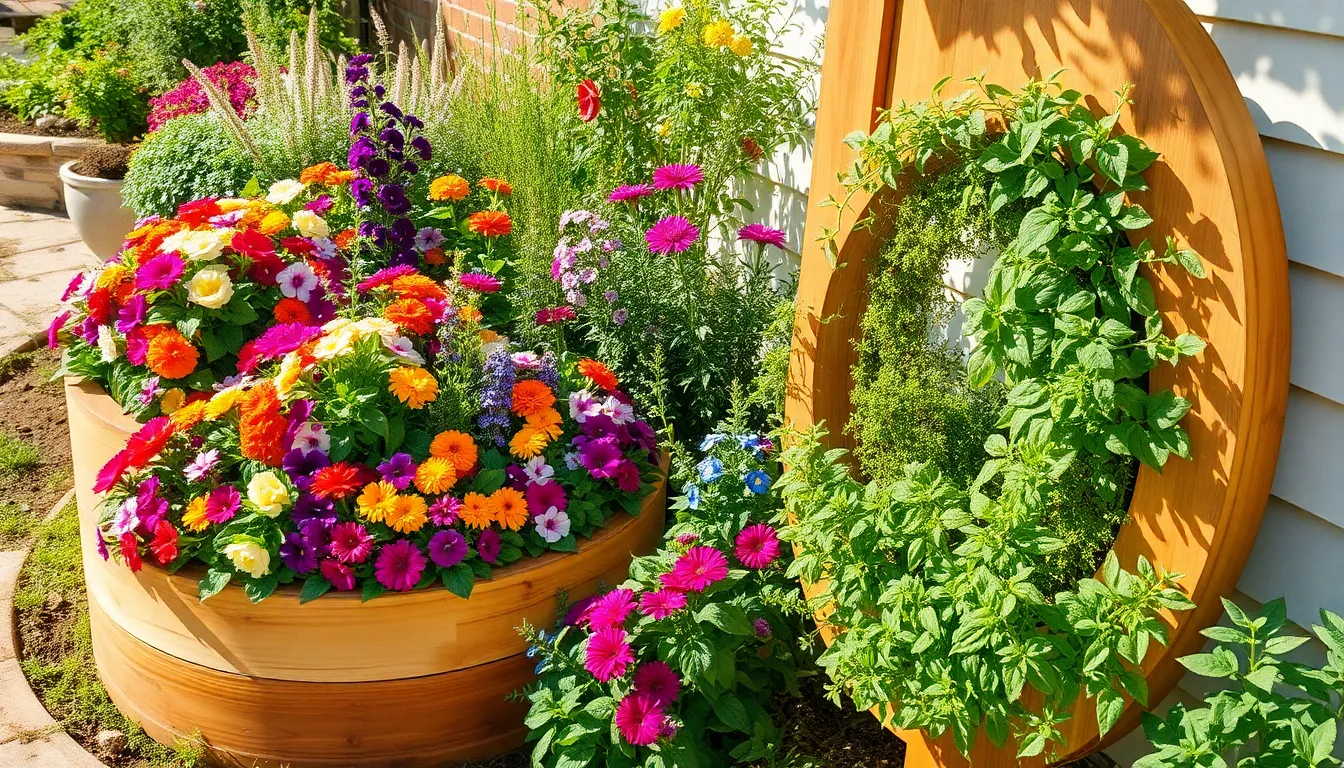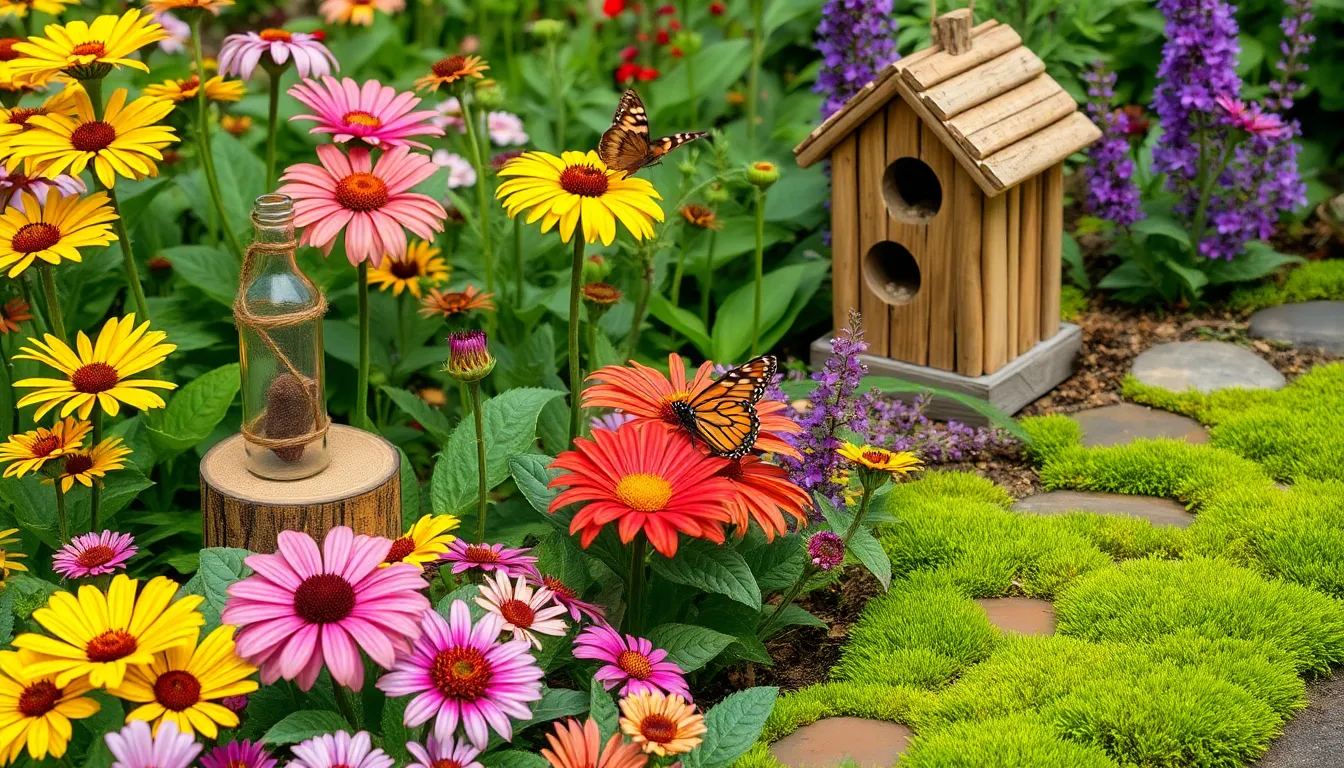Creating a butterfly garden is like inviting nature’s most delicate dancers to perform a private ballet in your backyard. Whether you’re a novice gardener or have a seasoned green thumb, the allure of these vibrant creatures flitting among your flowers can transform any outdoor space into a lively, colorful paradise. It’s not just about aesthetics; a butterfly garden contributes to biodiversity, offering essential habitats for these pollinators whose populations are in decline. In this article, we’ll guide you through ten essential elements that will make your garden a butterfly haven, ensuring you provide the perfect environment for these winged wonders to thrive.
For beginners, the idea of establishing a butterfly garden might seem daunting, but with the right guidance, it can be a rewarding endeavor. We’ll break down the process into manageable steps, focusing on plant selections and garden layouts that cater specifically to butterflies’ needs. Experienced gardeners will find this article a refreshing exploration of new techniques and plant varieties that can elevate their existing spaces. You’ll discover how to create a seamless blend of beauty and functionality, ensuring your garden is both a feast for the eyes and a sanctuary for butterflies.
From host plants for caterpillars to nectar-rich blooms for adults, each essential component in your garden plays a crucial role in the life cycle of butterflies. By the end of this read, you’ll be equipped with actionable tips and insights to attract butterflies and sustain them throughout their lifecycle. So, grab your gardening gloves, and let’s embark on this delightful journey to create a butterfly garden that’s as beneficial as it is beautiful. Your outdoor space will soon be humming with life, a testament to your role in preserving these enchanting pollinators.
Choosing Butterfly-Friendly Plants
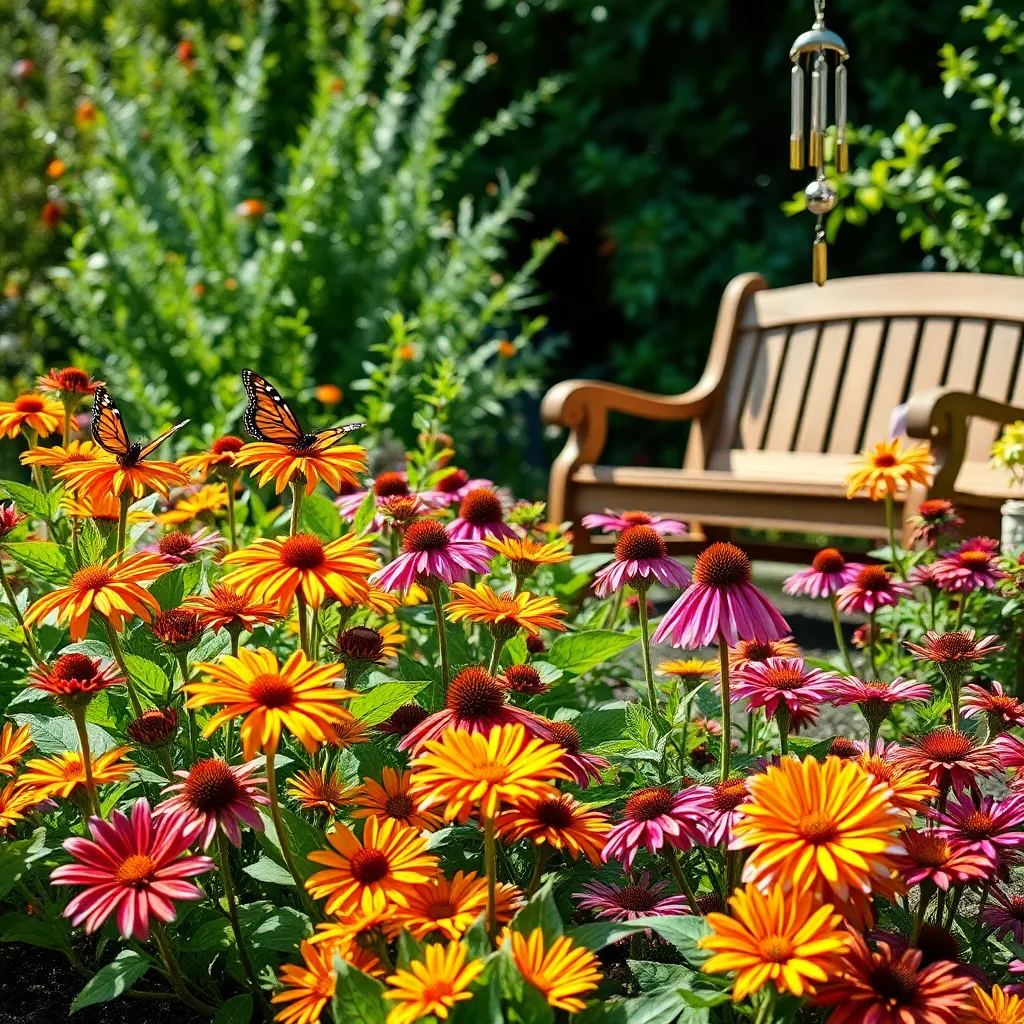
To create a butterfly-friendly garden, it’s essential to select plants that provide both nectar and host environments. Butterflies are attracted to bright, fragrant flowers, so consider planting varieties like coneflowers, zinnias, and lantanas.
Begin by choosing plants that thrive in your local climate and soil conditions. Most butterfly plants prefer well-drained soil and full sun, but some, like the shade-tolerant bleeding heart, can attract butterflies in less sunny spots.
Integrating native plants into your garden can enhance its appeal to butterflies, as these plants are well-suited to local conditions and provide essential resources. Check with local nurseries or extension services for recommendations on native species that are particularly attractive to butterflies.
For the more advanced gardener, consider adding a variety of host plants that support the entire butterfly lifecycle. Plants like milkweed for monarchs or parsley for swallowtails can encourage butterflies to lay eggs in your garden, providing a sustainable habitat for future generations.
Creating Nectar-Rich Flower Beds
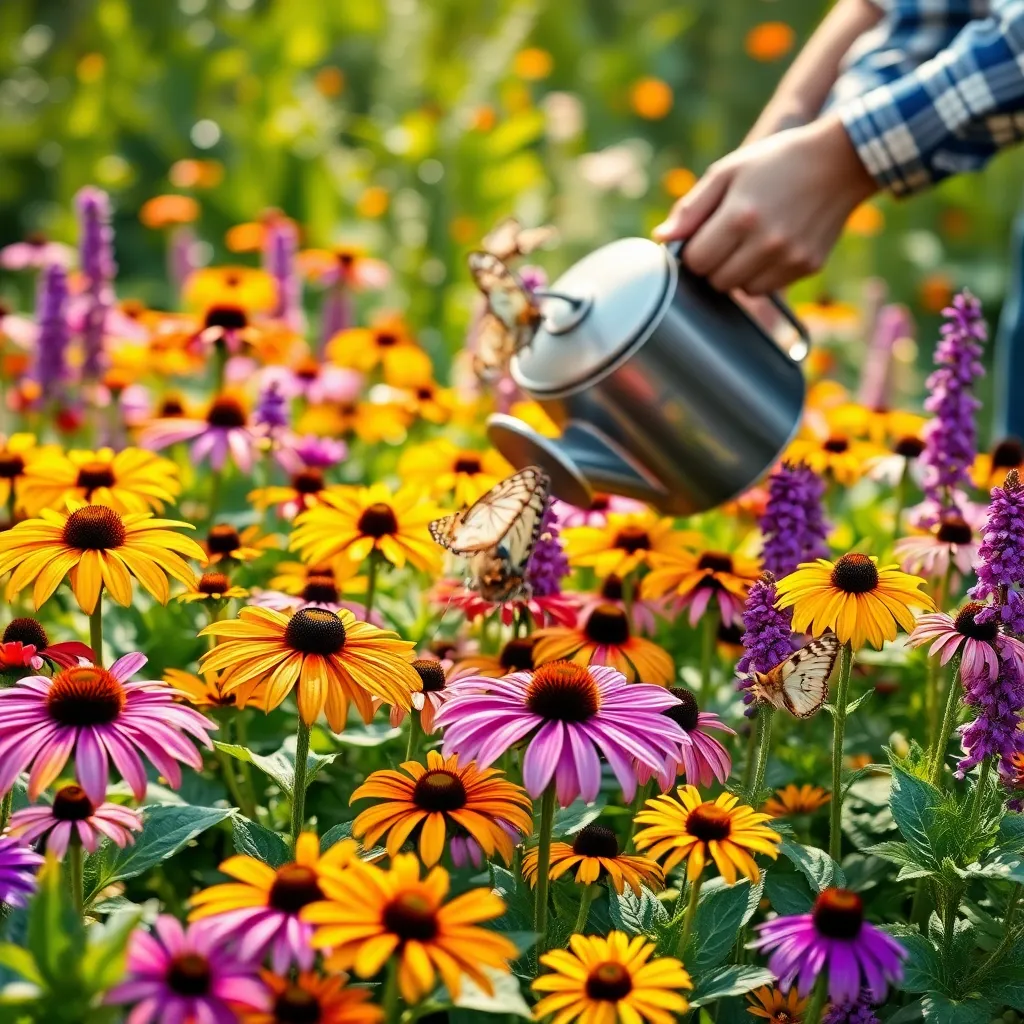
To create nectar-rich flower beds, focus on planting a diverse mix of flowers that provide continuous blooms from spring to fall. This ensures that butterflies have a consistent food source throughout their active seasons.
Start by selecting a range of plants that thrive in your local climate and soil conditions. For optimal results, choose a variety of native species, as they are well adapted to the regional environment and often require less maintenance.
Position your flower bed in a sunny spot, as most nectar-rich plants perform best with at least six hours of direct sunlight daily. Ensure the soil is well-drained and enriched with organic matter, such as compost, to provide the nutrients needed for healthy plant growth.
Consider planting flowers with different heights and structures to create visual interest and maximize space. Group taller plants like Joe-Pye weed and hollyhocks at the back, with medium varieties such as coneflowers and bee balm in the middle, and shorter blooms like alyssum and zinnias at the front.
Water your flower beds adequately, especially during dry spells, to keep the plants healthy and productive. A good rule of thumb is to provide about an inch of water per week, either through rainfall or supplemental irrigation.
For an advanced touch, practice deadheading—or removing spent blooms—to encourage continuous flowering and prevent the plants from going to seed too early. This technique not only extends the blooming period but also keeps your flower bed looking tidy and vibrant.
Planting Host Plants for Caterpillars
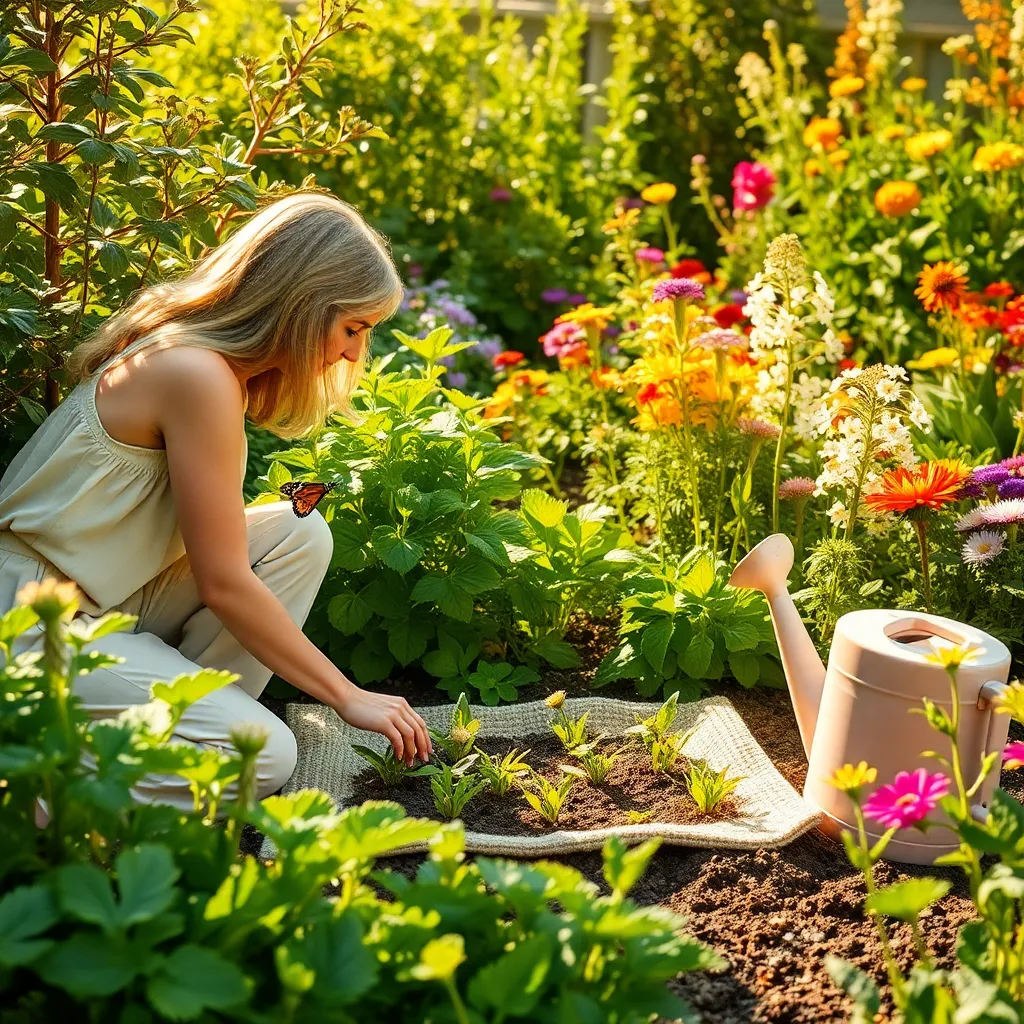
To attract butterflies, it’s essential to plant host plants that caterpillars can feed on. These plants provide the necessary nutrients for caterpillar growth and metamorphosis into beautiful butterflies. Milkweed is a popular choice for monarch caterpillars, thriving in well-drained soil and full sun. Ensure that the soil is slightly sandy and water the plants moderately to prevent root rot.
Parsley and fennel are ideal for attracting swallowtail butterflies. They thrive in a sunny location and can be grown in pots or directly in the garden. Regular watering is crucial, but avoid overwatering as these plants prefer well-drained soil. For optimal growth, add a layer of mulch to retain moisture and suppress weeds.
Other effective host plants include nettles and violets, which are favored by various butterfly species. Nettles grow well in partial shade and require moist soil conditions. Violets prefer humus-rich soil and can tolerate both sun and shade, making them versatile additions to your garden.
Consider planting a variety of host plants to attract different butterfly species. This diversity not only enhances your garden’s beauty but also supports local butterfly populations. For advanced gardeners, creating a layered garden with host plants at different heights can maximize space and biodiversity.
Designing a Sunlit Garden Layout
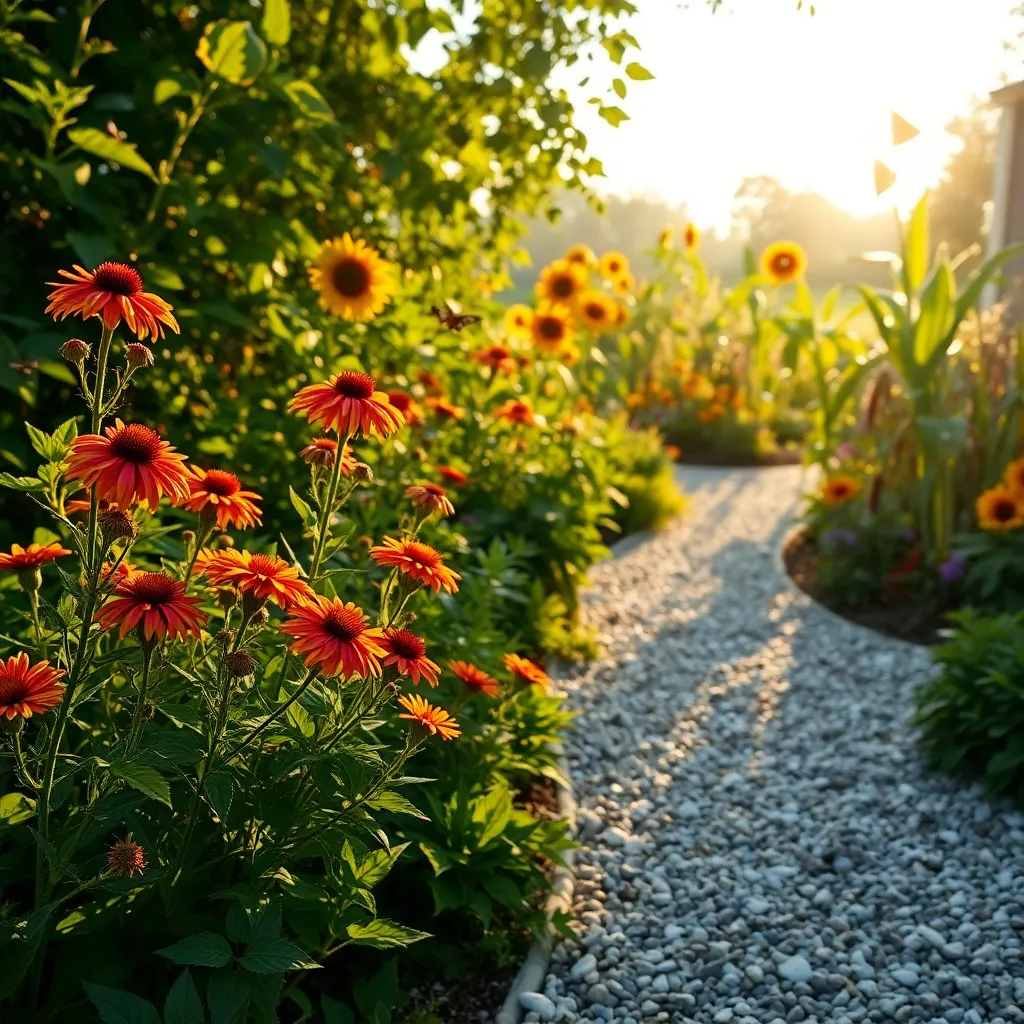
Designing a sunlit garden layout is crucial for a thriving butterfly garden, as butterflies are naturally drawn to warm, sunny environments. Begin by choosing a location that receives at least six hours of direct sunlight per day, ensuring your plants and butterflies can enjoy optimal conditions.
To maximize the appeal, incorporate a mix of nectar-rich flowers that bloom throughout the growing season. Select a combination of annuals and perennials such as zinnias, lantanas, and coneflowers to provide continuous nourishment and attract a variety of butterfly species.
Consider the height and spread of each plant when arranging your garden, placing taller plants like sunflowers at the back and shorter varieties toward the front. This not only creates a visually appealing layout but also ensures that all plants receive adequate sunlight and air circulation.
For gardeners looking to enhance their space further, adding a few flat rocks or stepping stones can provide butterflies with a place to bask in the sun and rest. These warm surfaces help butterflies regulate their body temperature, making your garden an even more attractive habitat.
Providing Safe Water Sources
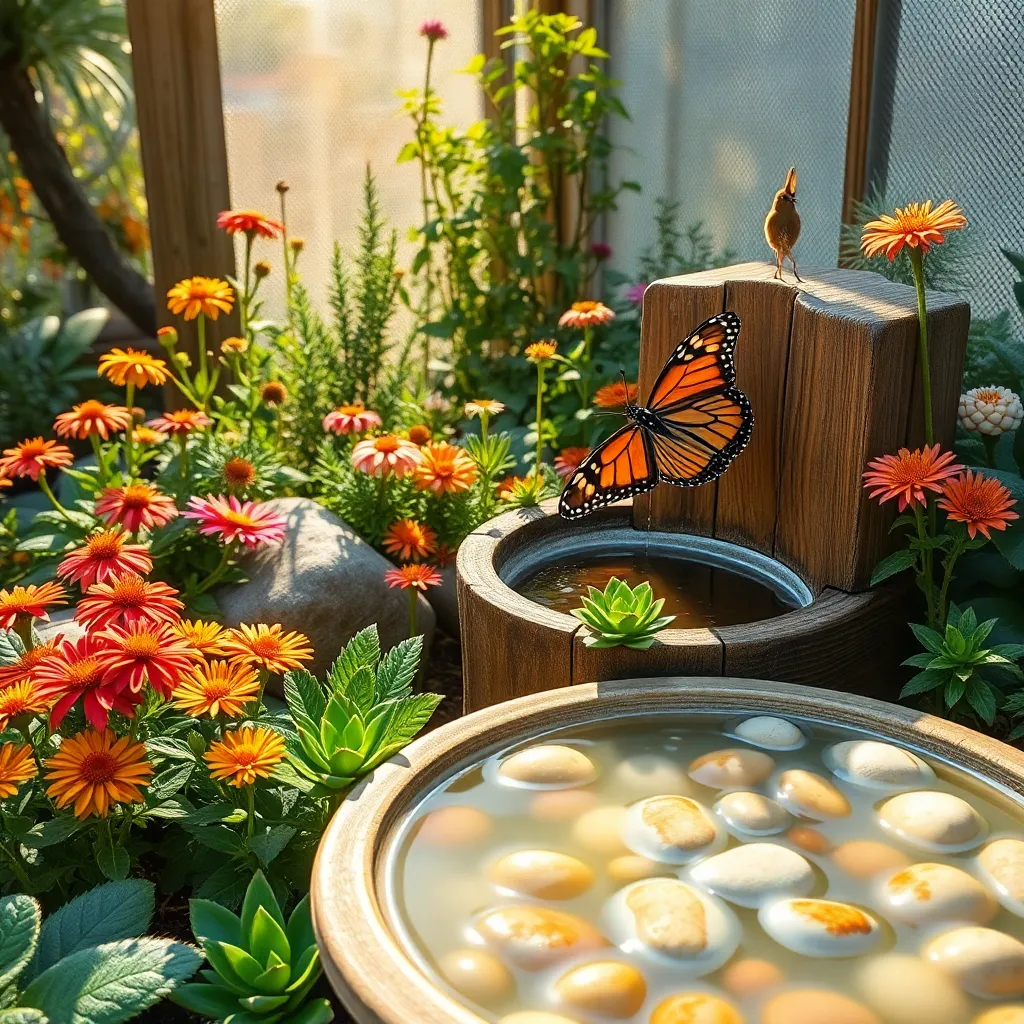
To attract butterflies to your garden, it’s essential to provide them with safe water sources. Butterflies need shallow water areas where they can comfortably land and drink without the risk of drowning. Consider creating a puddling area by placing a shallow dish or saucer filled with sand or gravel and adding just enough water to keep it moist. This setup replicates natural puddling spots where butterflies gather to sip water and absorb minerals from the soil.
Incorporating a birdbath with a gently sloping edge can also serve as an excellent water source for butterflies. Ensure the birdbath is placed in a sunny spot, as butterflies are more active in warm, sunlit areas. To make it butterfly-friendly, add a few flat stones that break the water’s surface, giving butterflies a secure landing place. By maintaining the water level so it’s shallow over these stones, you create an inviting environment for both drinking and sunbathing.
For those with a bit more space, consider installing a small pond or water feature with a shallow edge. This not only provides a water source but also enhances the garden’s aesthetic appeal. If you go this route, incorporate aquatic plants like water lilies or pickerelweed, which offer additional landing spots and attract a variety of pollinators. Regular maintenance, such as cleaning and refilling water sources, is crucial to prevent stagnation and ensure they remain inviting and safe for butterflies.
Beginner gardeners can start simple by using materials readily available at home. Repurpose an old pie tin or a plant saucer to create a basic puddling station with sand and water. For a bit of creativity, paint the saucer’s rim in bright colors to attract butterflies visually. As you become more experienced, consider experimenting with adding a bit of dissolved salt or sugar to the water to mimic the natural minerals butterflies seek in the wild.
Incorporating Shelter and Rest Areas
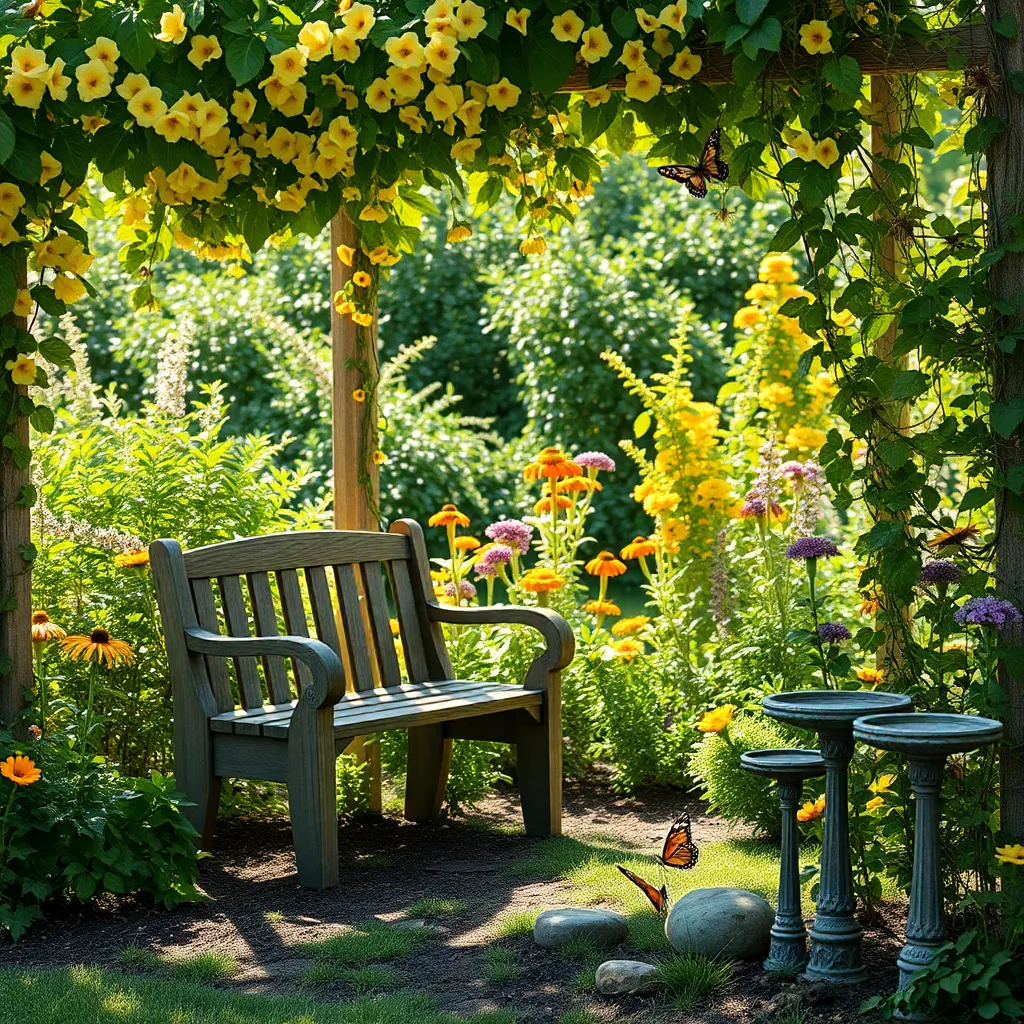
To attract and sustain butterflies, it’s crucial to incorporate shelter and rest areas in your garden. These areas provide protection from predators and harsh weather, allowing butterflies to thrive.
Consider planting dense shrubs or hedges, such as lilacs or butterfly bushes, which offer excellent cover. Place these near nectar-rich plants to create a seamless environment where butterflies can both feed and rest.
Adding flat stones or logs in sunny spots gives butterflies a place to bask and warm their wings, which is essential for their activity and survival. Ensure these surfaces are stable and positioned to receive ample sunlight, especially during the cooler parts of the day.
For an advanced touch, consider installing a small pergola or trellis covered with climbing plants like clematis or honeysuckle. This not only provides shade but also additional nectar sources, enhancing your garden’s appeal to butterflies.
Maintaining a Pesticide-Free Zone
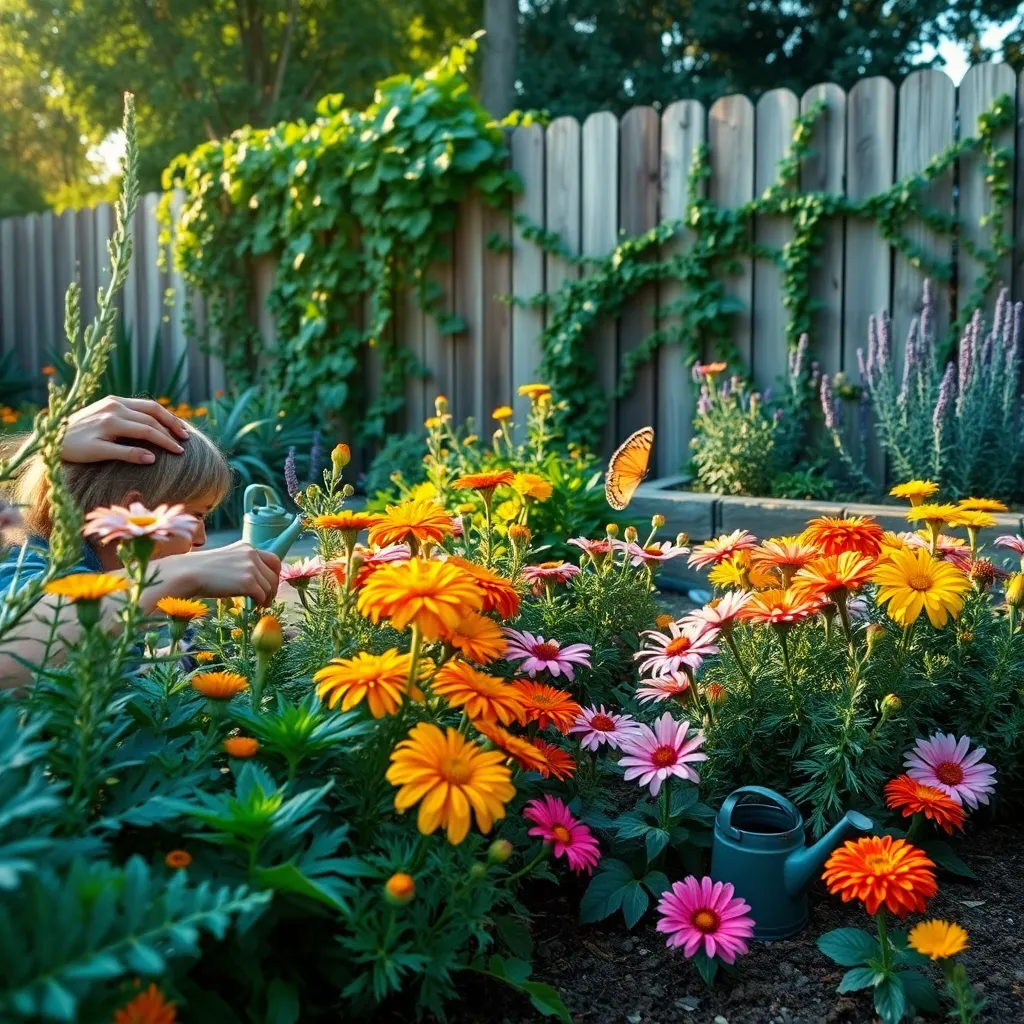
Creating a pesticide-free zone is essential for maintaining a thriving butterfly garden. Instead of chemicals, consider using natural pest control methods such as introducing beneficial insects like ladybugs and lacewings that naturally keep harmful pests in check.
To promote a healthy garden ecosystem, focus on building rich, organic soil that supports plant health and resilience. Enriching your soil with compost not only boosts nutrient content but also improves soil structure, helping plants better resist diseases and pests.
Encourage biodiversity by planting a variety of native flowering plants that cater to the entire life cycle of butterflies. This approach not only attracts butterflies but also fosters a balanced ecosystem where natural predators can thrive and manage pest populations naturally.
For those looking to dive deeper into advanced techniques, consider companion planting to deter specific pests. For instance, planting marigolds can repel nematodes, while basil can ward off aphids, enhancing both the beauty and functionality of your butterfly haven.
Attracting Butterflies with Colors
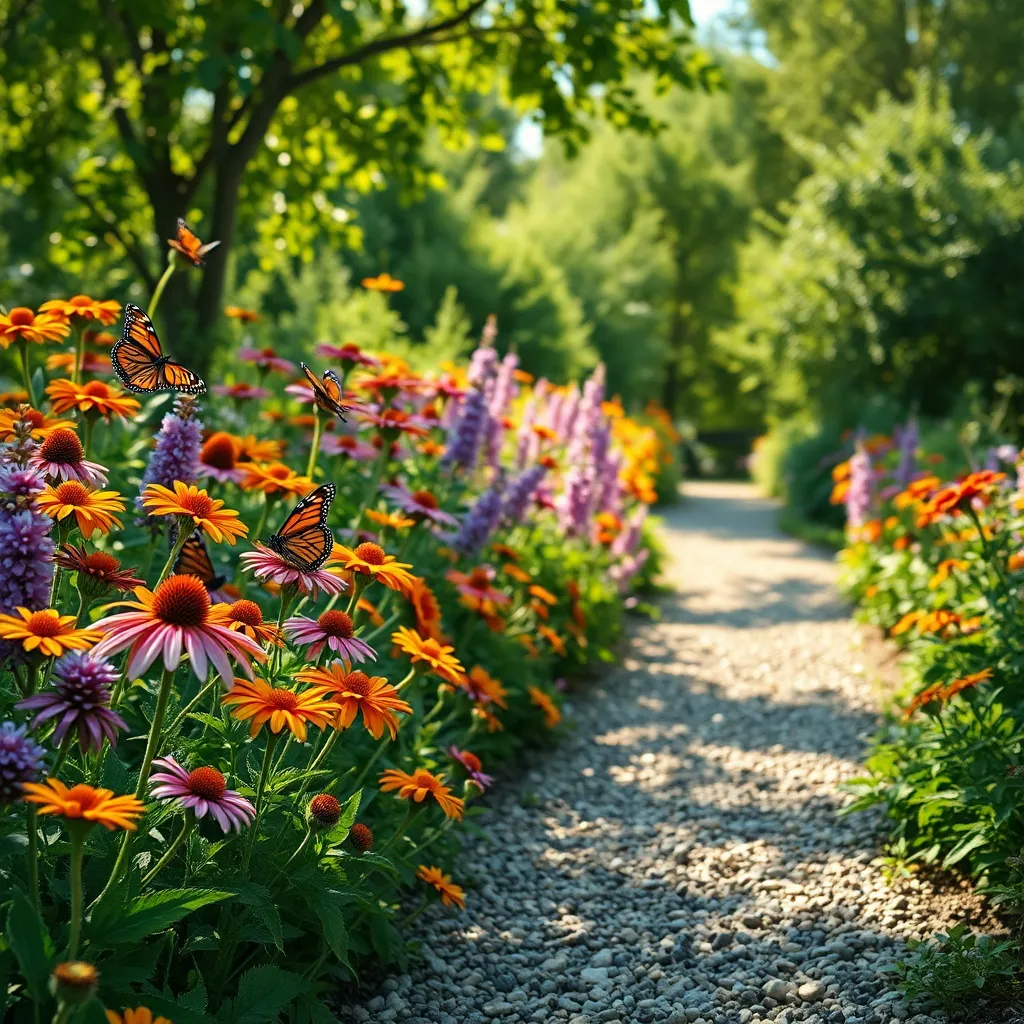
Butterflies are drawn to vibrant colors, so incorporating a variety of hues into your garden can make it a lively sanctuary for these delicate creatures. Consider planting flowers like zinnias, cosmos, and marigolds, which are not only colorful but also easy to grow in most regions.
To maximize the appeal of your garden, arrange your plants in clusters of similar colors. This design not only creates a stunning visual effect but also helps butterflies spot their favorite blooms more easily.
Understanding the preferences of butterflies can greatly enhance your gardening efforts. They are particularly attracted to bright reds, pinks, purples, and yellows, so aim to incorporate these shades throughout your garden.
Beginners should start with hardy perennials, which require less maintenance while offering long-lasting blooms. Plants like echinacea and black-eyed susans thrive in various soil types and need moderate watering, making them excellent choices for any garden enthusiast.
For experienced gardeners looking to diversify their plant selection, consider introducing tropical milkweed or lantana. These plants not only add a splash of exotic color but also provide essential nectar and breeding grounds for specific butterfly species.
Seasonal Care and Maintenance Tips
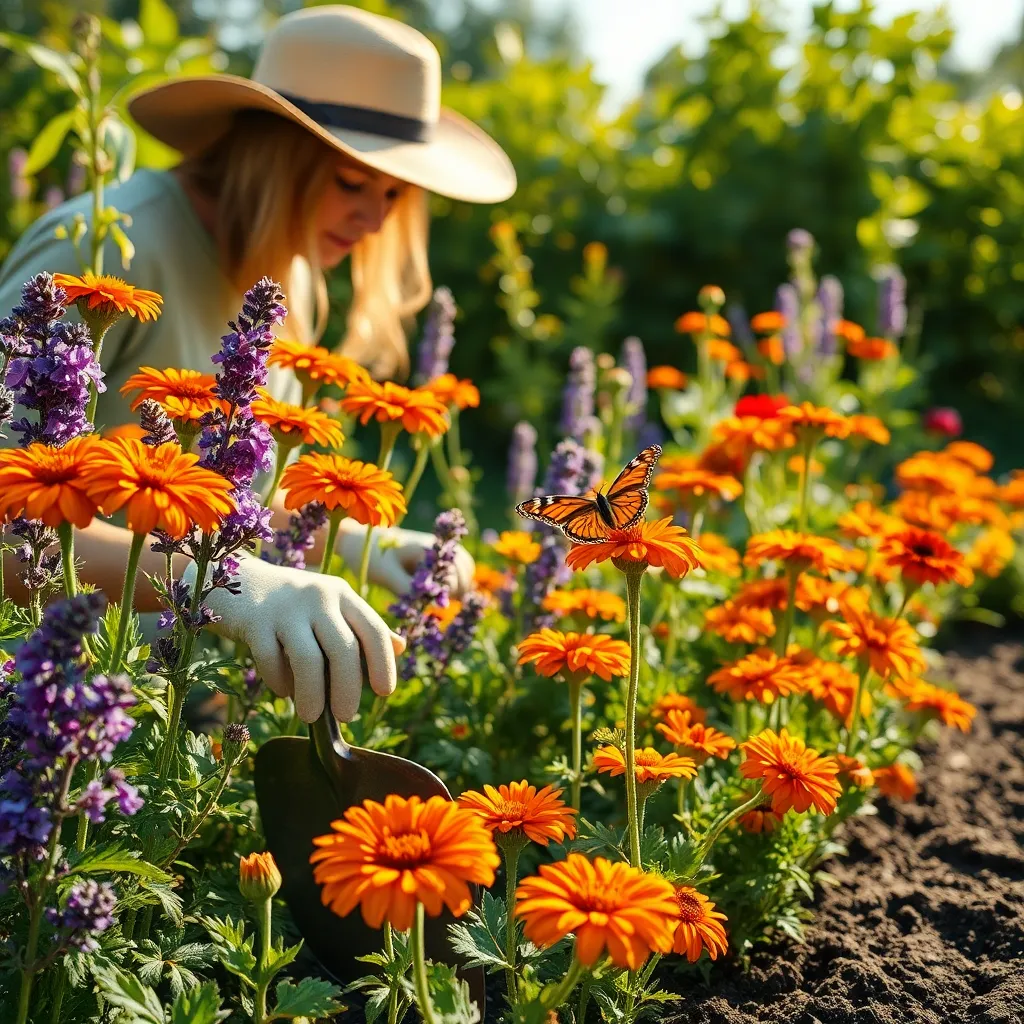
Butterfly gardens require seasonal care to thrive and attract beautiful visitors year-round. In spring, focus on cleaning up any dead plant material to prevent disease and promote new growth.
As summer approaches, ensure your garden is well-watered, especially during dry spells. Water deeply in the morning to reduce evaporation and allow roots to absorb moisture effectively.
In the autumn, it’s important to cut back perennials and mulch your garden beds. This will help insulate the roots and retain soil moisture, preparing your plants for winter.
Winterizing your butterfly garden involves protecting delicate plants from harsh conditions. Consider using a layer of straw or leaf mulch to shield the roots of vulnerable species.
For beginners, remember that consistent care tailored to each season can make a significant difference in your garden’s success. Advanced gardeners may wish to experiment with overwintering strategies for more tender plants.
Regardless of experience, keep a gardening journal to track what works best for your specific plants and location. This practice can help refine your seasonal care routine and maximize your butterfly garden’s vibrancy.
Monitoring and Enhancing Biodiversity
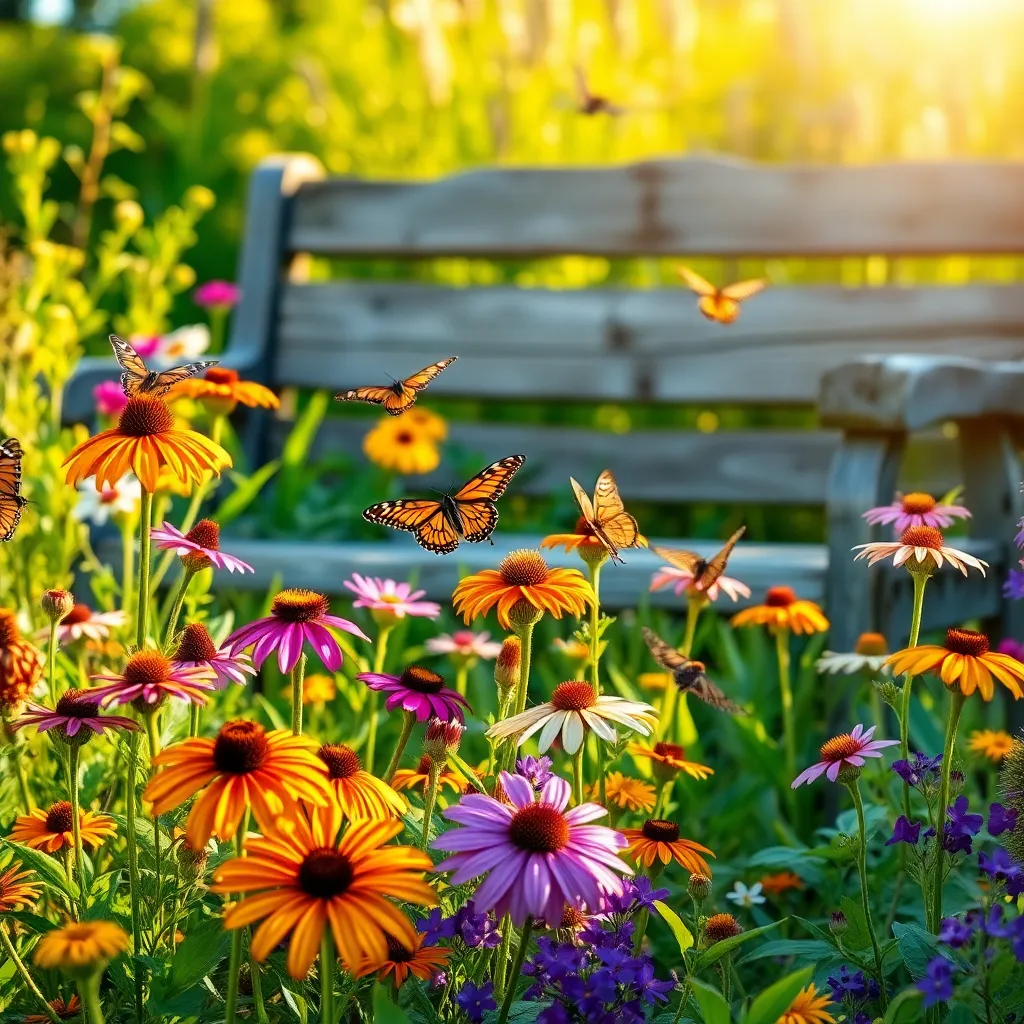
To foster a thriving butterfly garden, it’s important to monitor and enhance biodiversity. Start by planting a diverse range of nectar-rich flowers such as coneflowers, asters, and milkweeds, which provide essential food sources for butterflies.
Consider incorporating native plants, as they are well adapted to your local environment and support local wildlife. Native species often require less water and fertilizer, making them a sustainable choice that contributes to ecological balance.
In addition to plants, add elements like small logs or rock piles to your garden to create habitats for other beneficial insects. These natural features can attract pollinators and predators that help maintain a healthy garden ecosystem.
Regularly observe the variety of species visiting your garden to understand its biodiversity. Keeping a garden journal to record sightings can help you identify which plants attract the most butterflies and other beneficial insects.
For advanced gardeners, consider conducting a simple soil test to inform your planting strategy. Healthy soil with the right pH and nutrient levels supports robust plant growth, enhancing the overall biodiversity of your garden.
Conclusion: Growing Success with These Plants
As we flutter through the enriching journey of creating a butterfly garden, we uncover ten essential relationship concepts: understanding needs, nurturing growth, embracing diversity, maintaining healthy boundaries, fostering communication, offering support, celebrating achievements, practicing patience, adapting to change, and cherishing shared moments. Each of these principles mirrors the care and attention required to cultivate a thriving relationship ecosystem.
To take immediate action, consider selecting one principle to focus on this week—perhaps nurturing growth by learning something new together or embracing diversity by exploring each other’s unique interests. These small steps can lead to meaningful improvements in your relationship.
Remember, relationships are dynamic, much like a garden, and require ongoing attention. Save or bookmark this article to revisit these essentials whenever you feel the need for a relationship refresh. By investing in these principles, you plant the seeds for a resilient and flourishing partnership.
As you move forward, envision a future where your relationship blossoms with vibrant colors and enduring love. Empowered with these essentials, you’re well on your way to achieving lasting relationship success. Keep this guide close, and watch your relationship transform.

